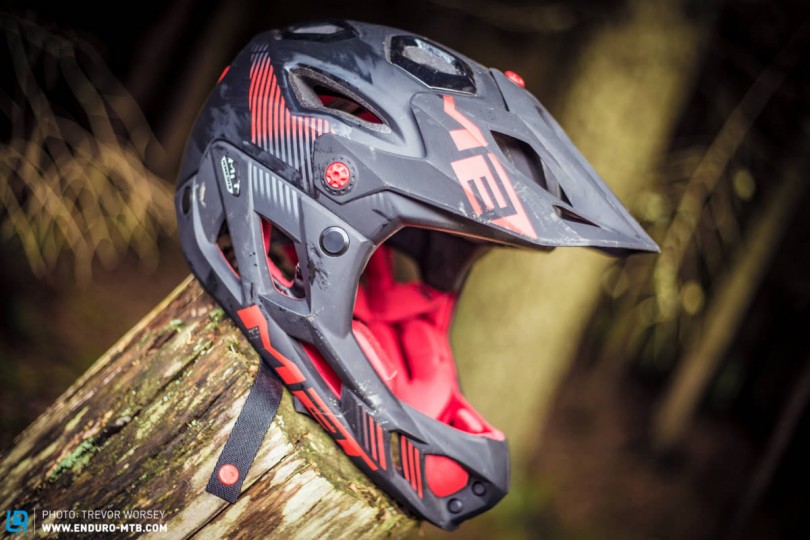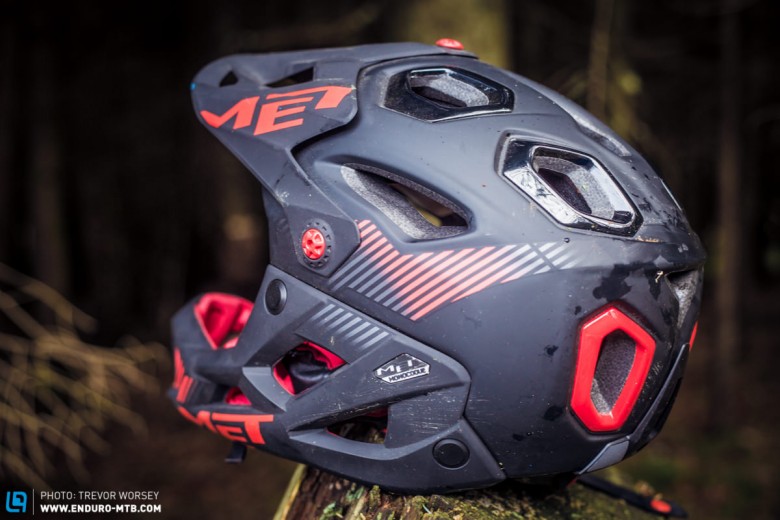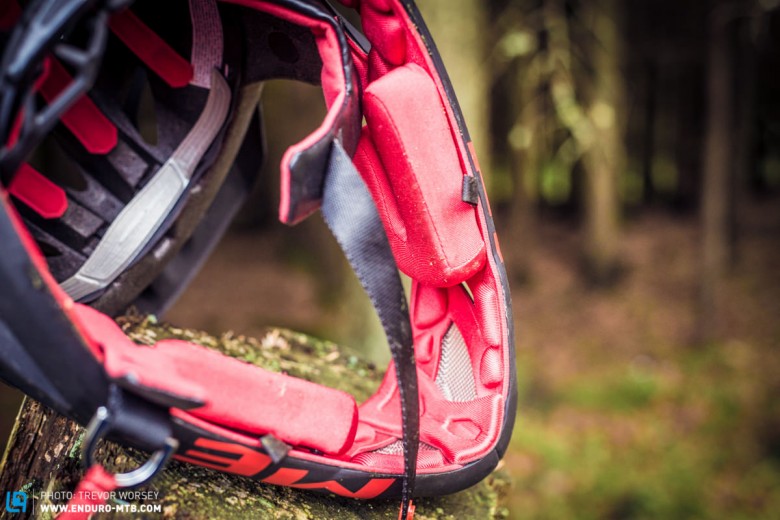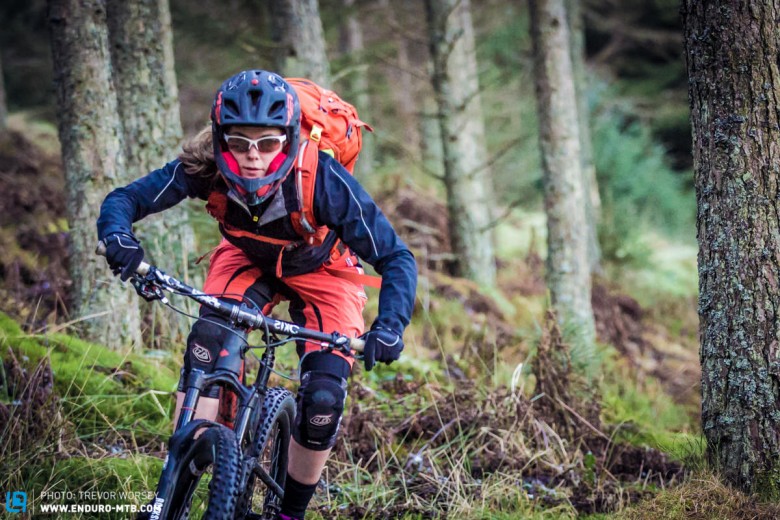The Review | MET Parachute HES Fullface Helmet

MET’s website proudly announces that “YES! The iconic MET Parachute is back!”, but this perhaps does the new Parachute HES a bit of a disservice, bearing little resemblance to the spindly Parachute of old. The new HES promises full-face strength wrapped up in a highly breathable 700g casing, and costs a very reasonable £169.99. With enough venting and breath-ability to permit comfortable all day use, the MET could be very interesting for both serious enduro racers and trail riders alike, we have been checking it out over the last 4 months to see how it performs.

First of all we need to get one miss-understanding straight, the chin guard on the new Parachute HES is fixed, and is not detachable like it’s predecessor. This has allowed MET to build a stronger chin guard that meets ALL current full-face standards, including the stringent ASTM standard. It is a surprise that MET thought to continue the ‘Parachute’ name, as the original was often mocked for being uncool, whereas the new Parachute HES is a very stylish lid. The MET Parachute is targeted firmly at riders who are looking for a lighter weight helmet, with the added protection of a full face chin guard. With many enduro races now demanding a full face for the timed stages, the HES would allow you to avoid the need to carry two helmets during long days on the pedals.


In use we found the helmet fit was very comfortable, the SAFE-T ADVANCED harness cradles the head like a trail lid, sharing the load over a broader contact area. Most testers found the helmet comfortable, without any hotspots or rubbing and the cradle kept the helmet very stable on the head. The double D buckle retention is fiddly with gloves, but allows the fit to be adjusted precisely without the need for re-tightening. We found that some larger goggles interfered with the helmet a little, but those with smaller frames fitted fine.


We liked that there is no padding around the ear area of the helmet, this is great for trail and AM riding where you want to be able to hear your mates, and presents less of an ‘isolated feel’. As yet we have not had any big crashes in the helmet, (beyond the call of duty for our testers) but it has shrugged off tree strikes and general abuse well, and is fitted with a Homothetic Embedded Skeleton to spread the pressure built up at the impact point over the whole shell. The helmet feels robust and well made, and Justin Leov and Liam Moyniham have been testing them hard in the EWS.


In the heat, we found that the GEL O2 front pad made from thermo-stabilising polyurethane morpho-gel helped to vent the forehead and did a good job of keeping sweat out of the eyes. The large and open vents kept the airflow high over the head and we had no issues with overheating. The cheek pads are supplied in two thickness’s and are easy to remove for washing or to help helmet removal in an emergency. We were also impressed with the goggle clip and POV helmet mounts supplied with the helmet, it seems that MET has paid a lot of attention to the details.


Over rough terrain the helmet is held firmly in place by the cradle, and the low chin guard allows a lot of cooling air to enter the helmet, making breathing easy. We encountered no airflow restriction when sprinting, and would be happy to wear this helmet for a full day on the trails. As the helmet uses an adjustment cradle, it will only be available in two sizes, a 54-58cm medium and a 59-62cm large.


Bottom Line
We cannot help but think that if MET had chosen to give this helmet a new name, it would not be so widely misunderstood. The Parachute HES meets all the current full face strength tests, and weighs in at only 700g, certainly the lightest full face on the market. We were very impressed with the fit and performance of the Parachute HES, finding it both breathable and cooling during long rides, and the stiff chin guard inspires confidence. Offering far more frontal protection than a trail lid, the MET Parachute HES could be the perfect choice for those looking to race enduro with one helmet, or trail riders looking for more protection without the stuffy confines of a conventional full face helmet.
Words and photos: Trev Worsey
Did you enjoy this article? If so, we would be stoked if you decide to support us with a monthly contribution. By becoming a supporter of ENDURO, you will help secure a sustainable future for high-quality mountain bike journalism. Click here to learn more.








